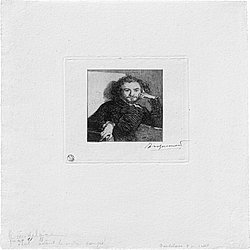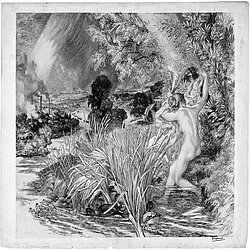Loading the page ...
Félix Bracquemond
1833–1914, Paris
The painter Félix Bracquemond had taught himself the art of etching as early as 1849 and quickly attained the same level of mastery as his friend and fellow artist, Charles Meryon. Discovered by Théophile Gautier at the World’s Fair in Paris in 1855, Bracquemond gradually became known in Parisian literary and artistic circles. He associated with Théodore de Banville, Charles Baudelaire, the brothers Edmond and Jules de Goncourt, and Nadar. Bracquemond was the co-founder in 1862 of the Société des Aquafortistes. From the 1860s he was friends with Édouard Manet, taught him how to etch and held a joint exhibition with him in 1863 in the Salon des Refusés. Around 1879, after a longish intermezzo, Bracquemond resumed his interest in the various printmaking techniques and was on friendly terms with Edgar Degas. Although Bracquemond’s oeuvre is very diverse and he also distinguished himself as a painter, his significance derives principally from his considerable printmaking output. He experimented indefatigably with new printing processes and ranks among the most talented graphic artists that France produced in the second half of the 19th century. His choice of motifs often reveals a penchant for moralising and socio-critical themes that has its roots in a positivist outlook on life and takes account of Baudelaire’s call for modernity.
Archive

